
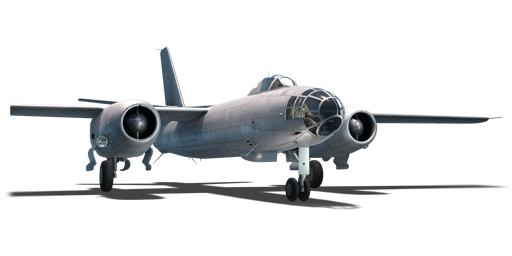


The IL-28Sh was a modified version of the IL-28 that featured 12 additional underwing rocket pylons. This was an attempt to expand the IL-28's capabilities to engage ground targets more effectively, addressing the need for a dedicated attack aircraft. Testing began in the autumn of 1967, and engineers quickly realized that the aircraft would have to operate at elevated levels of risk due to its insufficient armour protection, large profile, and lack of low-level ejection seats. Although it had some advantages, such as crew visibility, the drawbacks were deemed too great to move forward with the project, and a shift was made toward developing a distinctive attack platform. A total of 300 IL-28s were planned to be converted, but only a small number had actually been modified before the project was ultimately abandoned.
The IL-28Sh was introduced in Update 1.79 "Project X". The main difference with the IL-28 is the additional suspended armament featuring extra cannons, rockets, and even incendiary bombs. This makes it a positively lethal aircraft in combined battles, assuming that it can survive long enough to unleash its firepower.
flaps
flaps
flaps
brake
| Belt | Belt filling | Armor penetration (mm) at a distance: | |||||
|---|---|---|---|---|---|---|---|
| 10 m | 100 m | 500 m | 1000 m | 1500 m | 2000 m | ||
| AP-I/FI-T | 32 | 30 | 22 | 15 | 10 | 7 | |
| FI-T/AP-I/AP-I/AP-I | 32 | 30 | 22 | 15 | 10 | 7 | |
| FI-T/FI-T/FI-T/AP-I | 32 | 30 | 22 | 15 | 10 | 7 | |
| AP-I | 32 | 30 | 22 | 15 | 10 | 7 | |
| Belt | Belt filling | Armor penetration (mm) at a distance: | |||||
|---|---|---|---|---|---|---|---|
| 10 m | 100 m | 500 m | 1000 m | 1500 m | 2000 m | ||
| AP-I/FI-T | 32 | 30 | 22 | 15 | 10 | 7 | |
| AP-I/AP-I/AP-I/FI-T | 32 | 30 | 22 | 15 | 10 | 7 | |
| FI-T | 4 | 4 | 3 | 3 | 3 | 3 | |
| Name | Weight | Slot | ||||||||||||
|---|---|---|---|---|---|---|---|---|---|---|---|---|---|---|
| 16 × | 110.2 kg |  |  |  |  |  |  |  |  |  |  |  |  | |
| 252.2 kg |  |  |  |  |  |  |  |  |  |  | ||||
| 235 kg | 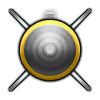 |  |  |  |  |  | ||||||||
| 374 kg |  |  |  |  | ||||||||||
| 163.8 kg | 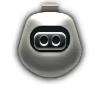 |  | ||||||||||||
| 12 × | 1,242 kg | 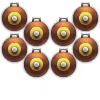 | ||||||||||||
| 8 × | 2,017.6 kg | 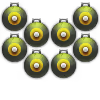 | ||||||||||||
| 4 × | 2,033.2 kg | 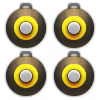 | ||||||||||||
| 1,400 kg | 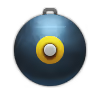 | |||||||||||||
| 2,983 kg | 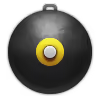 | |||||||||||||












Flight performance | |
|---|---|
Survivability |
|---|
Weaponry | ||
|---|---|---|